|
1800's JAPANESE ARMY WAKISASHI SWORD - 22 -
At the end of WWII, the Japanese people were forbidden to own swords. many of them surrender them to the American
troops where the GI's had the opportunity to pick them and bring them back to the states as war souvenirs.
Since those days the appreciation for the craftsmanship and beauty of the Samurai sword has increased year by
year. Turning the sword into one of the most sought after military antiques. The Katana was developed during
the Momoyama period in Japanese history. The length of the sword allowed the warrior to fight from horseback.
The curve in the blade facilitated a slashing motion.
The item featured here is a Japanese Katana Samurai sword. It is composed of a combination of WWII and early
1900's parts. This was not an uncommon thing to occur since several soldiers brought their family swords to combat.
The fittings on this sword are very nice. Unfortunatelly the blade has extensive damage. The edge shows
bends and pitting. This damage may have occured during the war or after the war, when people sadly employed the
swords as gardening tools or to perform other forms of outside work.
The scabbard of the sword is plain wood. Normally it was covered with lacker or leather. It is possible that
this one is plain because the sword was not stored properly when it was brought back to the US.

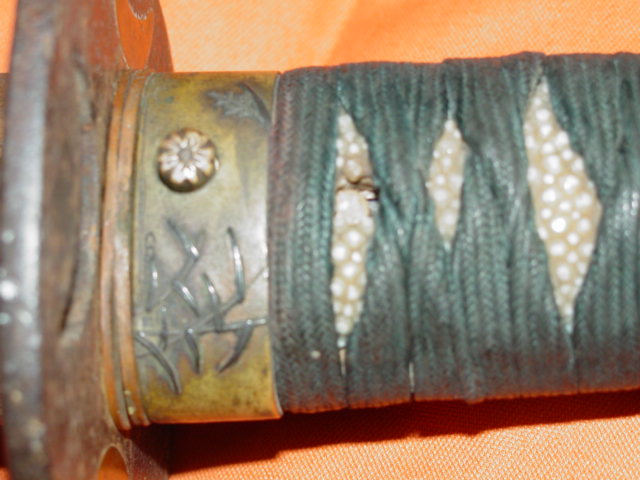
The handle in this sword remains tight. It has not been loosen with use. Shark or Ray skin is used to line
under the cloth wrappings. The Menuki were used to adorn each side of the handle. Their placement was roughly
at the center of the handle.
The top of the handle is capped with a piece of metal. sometimes ot would have a very simple design. In this
case the design is more complex showing a crane and plant.
The fittings of the sword were normally created by craftsmen who specialized in the making of the part. The
blade smith would not be the one making the scabbard, or Tsuba, etc.
The swordsmith signed the sword once it was determined that it met the quality standards set by the school where
the sword was forged. The signature was placed on the Tang. The size and shape of the Tang are indicating
factors of which school produced the sword. However, not all swords were signed.
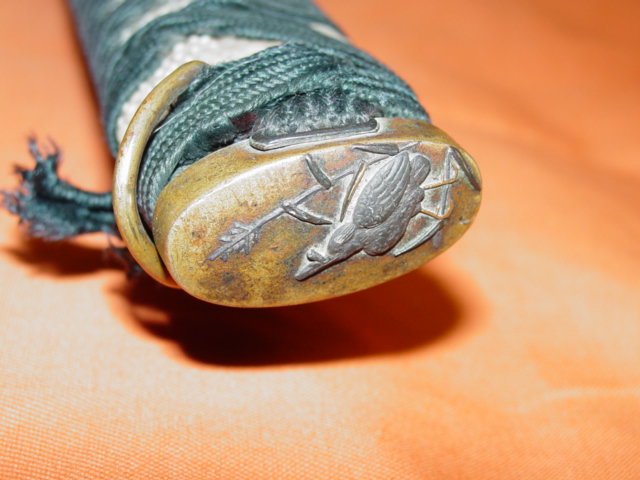
|
This page is a recognition and identification guide for Samurai swords.
Multiple detailed photos of a specific sample are provided. Descriptions point
out clearly defined points that should be noted.
One of the most commonly asked questions is "How much is my Samurai Sword worth?".
A price guide is included here to address this question. The value of the swords is
reviewed over a period of several years. A trend can be observed. The present worth
of the edge weapons in the collector's market is illustrated.
This service is provided free of charge to the visitor/enthusiast courtesy of
MilitaryItems.com,
a company dedicated to the preservation of military history and to providing quality
military antiques and collectibles to museums, institutions and the general public.
|
|
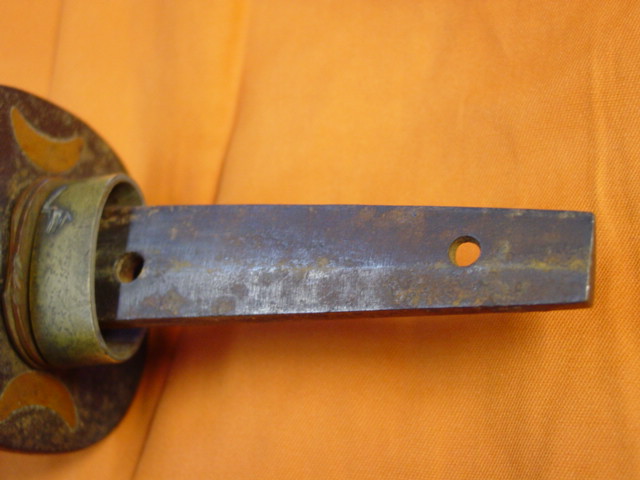
The photos of the Tang reveal that this sword was not signed. There are two holes drilled, one near the base and the
other close to the end. The sword has not been shortened. It is the same length it was when it was produced.
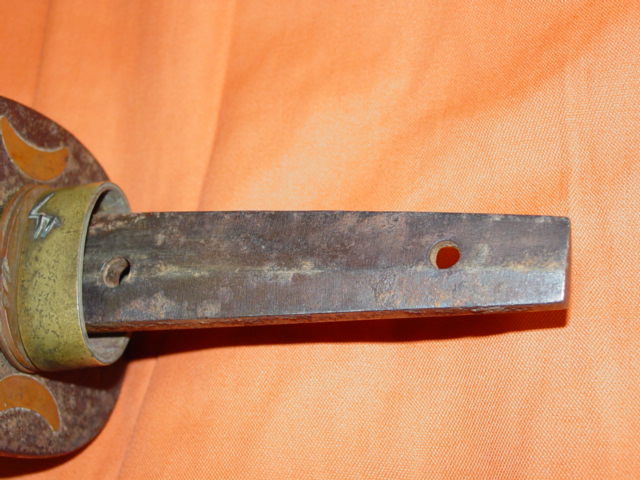
The length of this sword is approximatelly 37 inches. This measure was performed with the sword inside the
scabbard. the typical length of the blade (from the top of the tang, with the handle off, to the tip) was
between 25 inches to 30 inches.
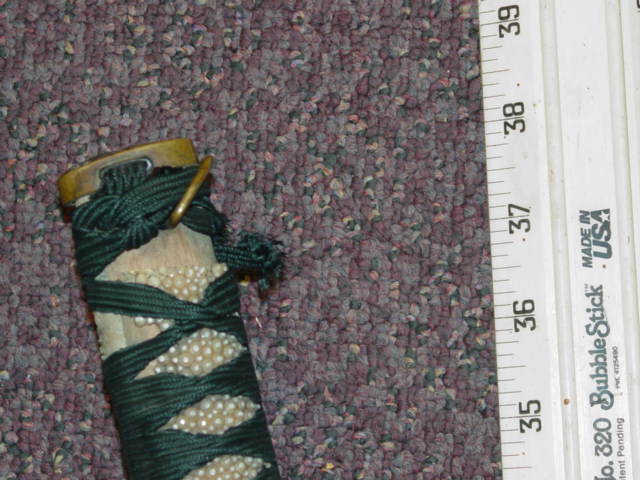
This is a closeup view of the top of the Tsuba. The remains of a guilded design can still be recognized. It was
a common practice to adorn the Tsuba to enhance its appearance.
The button shown on the picture was used to release the sword from the scabbard. A small metal spring helped
secure the blade to the top of the scabbard. Pressing the button wouled cause the spring to release the hold.
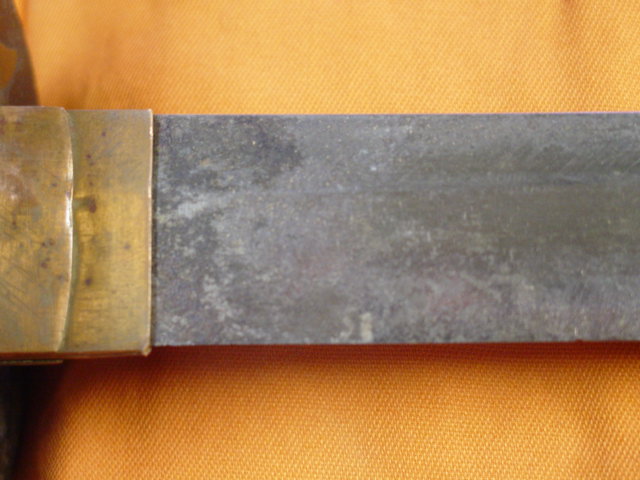
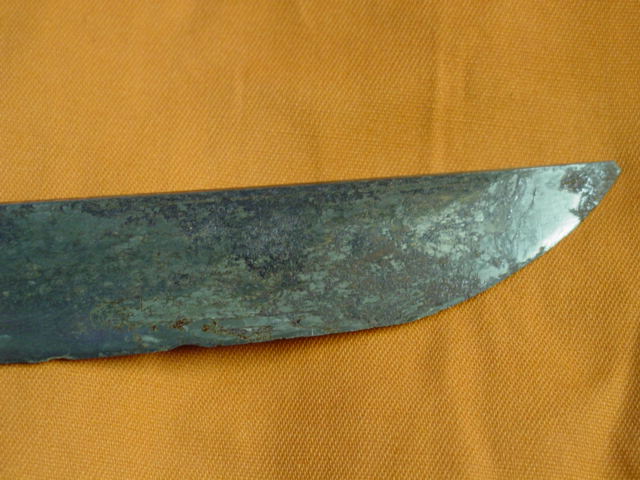
The hanguard of the sword is known as the Tsuba. Its function was to protect the warriors hand from and incoming
blade as well as for simple aesthetics.
The shape is round and has two openings int he shape of a quarter moon. The same design is performed in gold
inlay in the other sides.
The Tachi has a design of a bamboo branch on one side. A hole is opened on one side to hold the locking release
mechanism button. Pressing this button would release the lock and allow the sword to be taken out of the scabbard.
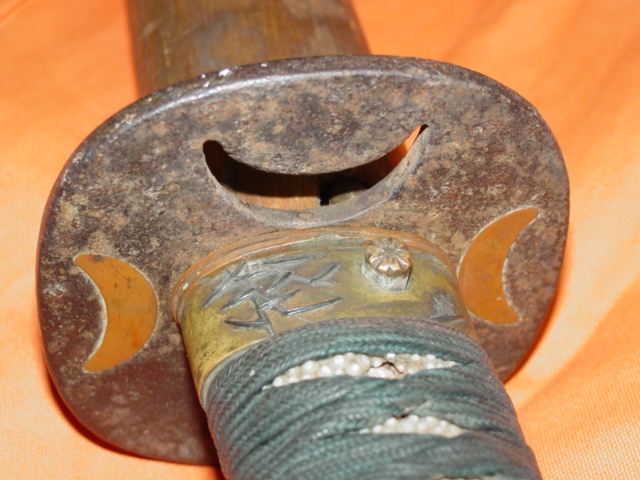
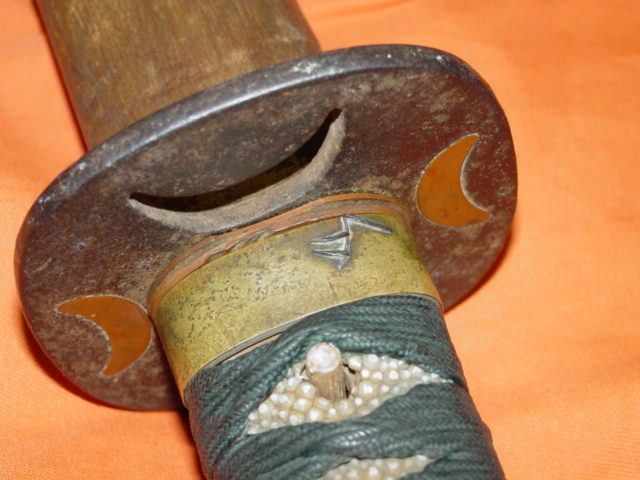
This Samurai Sword may be currently reproduced.
It is becoming more difficult to be able to tell the fake ones from the real ones because
the quality of the reproductions is improving. The collector must become familiarized with
the construction style and materials employed in the manufacturing of this item.
Attention to the details is critical in order to be able to determine the authenticity of
the collectible.
If you have an interest is seeing other Japanese Samurai swords, you can do so by going to our
Japanese Samurai Swords Price Guide
identification guide. Where we cover Samurai swords from all periods.
| 




